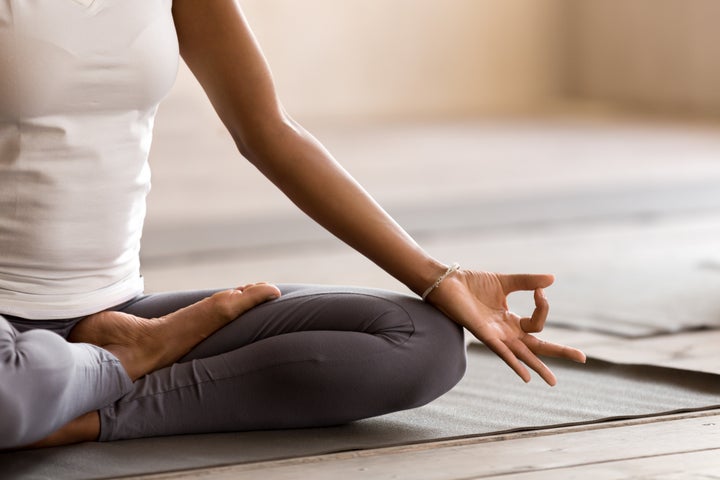
Yoga is high on the agenda in terms of what it means to live well these days. Once an underground pastime held in church halls and community centres, yoga studios are now jostling for space on high streets, roof-tops and at festivals across the world.
Yoga might save your mind, body and spirit, but not until it’s taken all your money. It’s become exclusive, elitist and, at anywhere up to £20 a class, expensive. But this modern yoga isn’t quite what it was meant to be when the practice first emerged in ancient India around 5,000 years ago. The old yoga was intended to be a method for self-inquiry and meditation. Yet, the new practice we have today appears to have become a trendy, self-serving, fitness-focussed activity.
On social media, yoga is presented as a panacea to all ills, but this hasn’t been the case for me over the decades since I first stepped on a mat in a creaky east London gym in 1996. None of my teenage peers had heard of it back then – it was regarded as a strange thing to do.
Since then, I’ve witnessed how a relatively unpopular (in the West) practice, has transformed into a multimillion-dollar, wellness espousing industry, that’s led yoga astray. You know a culture is in trouble when it has become dominated by (white) people who have boiled it down to a handful of clichés, obscuring most of what it is meant to be about.
Yoga these days has trappings: plant-based diets, strappy crop-tops, and yoga-as-soft-porn via bikini bodies doing handstands on beaches. It’s intensely painful for me to see yoga – a practice that is deeply personal for me (and many others) – distorted, decontextualised and, in this case, sexualised.
There’s a lot of cultural appropriation involved in yoga too. Highlights include: tattoos of Hindu gods and the Om symbol, poorly pronounced Sanskrit chants and puns on the word Namaste. It’s not uncommon to see it slaughtered by activewear brands, as in “Namastay in bed all day”. Namaste roughly means “I bow to you” and is a Hindu greeting. It’s a lovely sentiment and you’ll hear it on the lips of a yoga teacher near you, but it’s not directly related to yoga.
I wrote about its misuse on Instagram and several teachers got in touch to say they don’t say it anymore. One asked: “Do we know how it leaked into yoga?” My guess is that some westerners went to India, found yoga, returned home to share it and threw Namaste in for “exotic” measure. Years later, it’s ended up on T-shirts and in yoga classes.
I’m not against innovation, but there’s a trend for yoga being remixed with other fitness activities such as boxing, dance and HIIT to the extent that it seems any movement-based class is not exempt from being labelled as yoga. It’s also often blended with other cultural practices like cacao ceremonies, reiki, and gong baths, which pleasing as they may be, all stem from other cultures.
Yoga also has a serious diversity problem in terms of both teachers and practitioners, with classes tending to be predominantly white. There appear to be invisible barriers stopping certain people accessing yoga – specifically people of colour, people with disabilities, LGBT+ and those with bodies that don’t reflect the hetero-looking, bendy limbed, white, models generally presented on yoga marketing.
Teaching yoga has made me question whether I’m wrong to feel conflicted about what’s happened to to it. I can’t help feeling that what’s going on is in fact a perverse form of 21st Century colonialism. Here I am, a South Asian yoga teacher, feeling forced to distort a tradition that is a part of my own ancestral heritage. This paradox is exhausting to exist within.
Yoga is a political issue and it needs a revolution. But it’s going to take more than wellness businesses adding BAME faces to their fliers and marketing. Offering several subsidised spots during peak-times, prioritising teaching opportunities for teachers of colour – South Asian ones in particular – and taking yoga to low-income and hard to reach communities (and paying teachers better so they can do this) might work too.
And on the ground, yoga teachers themselves could open every class that they teach by telling their students what yoga is and where it comes from – and be respectful and sensitive about how they do.
The priciness and whiteness of yoga suggests that wellness is a privilege, and it shouldn’t be. I strongly believe it’s the responsibility of everyone who works within yoga, and capitalises from it, to find ways to change that.
Nadia Gilani is a writer and yoga teacher.